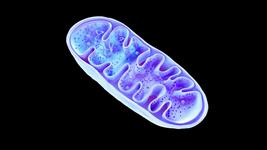A Single Cas9 Injection Could Mean a Lifetime of Treatment for Angelman Syndrome

In a new first, scientists have developed what could become a one-time Cas9 treatment for Angelman syndrome that would replace frequent, invasive injections.
The rare genetic, neurodevelopmental disease, which often goes undiagnosed but affects one out of every 12,000 to 20,000 people, causes severe cognitive disabilities, developmental delays, and balance problems. But now, about 20 years since scientists first realized it's possible to treat Angelman syndrome at all, research in the journal Nature shows that the disease could be at least mostly reversed at or around birth. Angelman syndrome patients typically live through adulthood, so a one-time treatment could do away with years' worth of frequent doctor visits and injections.
»This is pretty spectacular finding or development,« says Dr Arthur Beaudet, a paediatrician and molecular geneticist who until recently was the department chair of genetics at Baylor College of Medicine, and this year transitioned to focus full-time on his startup, Luna Genetics.
Beaudet didn't work on the new study, but he's a major player in the field of genetic neurodevelopmental disorders. Many of the developments that paved the way for this new Cas9 treatment were developed in Beaudet's lab, and he followed this particular project closely.
Angelman syndrome
Angelman syndrome is a genetic disorder. It causes delayed development, problems with speech and balance, intellectual disability, and sometimes, seizures.
People with Angelman syndrome often smile and laugh frequently, and have happy, excitable personalities.
Developmental delays, which begin between about 6 and 12 months of age, are usually the first signs of Angelman syndrome. Seizures may begin between the ages of 2 and 3 years old.
People with Angelman syndrome tend to live close to a normal life span, but the disorder can't be cured. Treatment focuses on managing medical, sleep and developmental issues.
Source: Mayo Clinic
The CRISPR-Cas9 strategy
Angelman syndrome is caused by a mutation in the copy of the UBE3A gene you get from your mother. Typically, you get a copy of the UBE3A gene from each of your parents, but the paternal copy of the gene is naturally silenced. When a mutation knocks out the maternal copy, patients are left without a single functional copy of the gene.
Treatments like this new gene-editing therapy ignore the maternal copy — that one's toast. Instead, they reawaken the dormant paternal copy of the gene by targeting and disabling the ligase UBE3A-ATS that downregulates its expression.
The new gene-editing therapy does this by loading up an adeno-associated virus (AAV) — a typical vector for gene therapies — with a short Cas9 variant and guide RNAs. These targeted Cas9 to 75 different Snord115 genes that are packed into the UBE3A-ATS. The Cas9 was able to disable the UBE3A-ATS, ultimately reactivating the paternal copy of the gene. The treatment worked in mouse models — both reactivating the gene and restoring the mice to a more typical appearance and behavior — as well as in cultured human neurons.
Three goals: Targeting CRISPR, test in human cells and test in mice
»There were three primary goals,« explains University of North Carolina neurobiologist Mark Zylka, the lead author of the new paper.
»The first was to find a region of the antisense [UBE3A-ATS] that could be targeted with CRISPR-Cas9 to activate the UBE3A gene and do that in cultured mouse neurons. The second goal was if we target that region in human neurons. And the third part was 'Can we get this to turn on the UBE3A gene in the mouse brain?' And a component of the third part, since it worked, since it turned the gene on, was to see if it rescued the behavior of the model mouse.«
And Mark Zylka adds:
»We were able to show that 'yes', you can use CRISPR-Cas9 to turn the paternal copy on,« he says.
»You can do it in mouse neurons, you can do it in human neurons, and you can get it in the brain with AAV, and it works. We did it as an early treatment. These are embryonic or early postnatal animals. You can treat some — not all, some — behavioral phenotypes.«
The main challenge, Mark Zylkaexplains, was figuring out how to target the UBE3A-ATS, since it doesn't actually code for a protein. The RNA strand is about a million bases long, many times longer than the typical gene, so Zylka and his team had to find a way to target enough critical regions to actually disable the genetic behemoth.
Other treatments in early clinical development
The approach is new, but the end goal is not: Other treatments for Angelman syndrome will likely become available first, according to Arthur Beaudet.
A small handful of early-stage clinical trials, including those launched by the Foundation for Angelman Syndrome Therapeutics (FAST) are investigating the use of antisense oligonucleotides to reawaken the paternal UBE3A gene.
These oligonucleotides also target UBE3A-ATS to keep it from silencing the paternal UBE3A. Instead cutting into the antisense like Zylka's new gene therapy does, the oligonucleotides bind to it and gum up the works.

An oligonucleotide treatment, which was first demonstrated in Arthur Beaudet's lab, could make a huge difference for Angelman families if the clinical trials go well. But there are a lot of unknowns about the myriad experimental Angelman treatments, not the least of which is whether there's an age or critical period in development at which treatment stops being effective.
»If you're a parent right now, there's a lot of urgency to get your child treated at the youngest possible age,« Beaudet says, »and the oligonucleotides are what is very currently and actively [being investigated] in demonstrating the feasibility and demonstrating that there's going to be some benefit from this treatment.«
»All of this will happen before Mark Zylka's approach will get into the clinic, I think,« Beaudet adds.
Those critical period unknowns are one of the reasons a gene-editing therapy would improve upon the groundwork laid by oligonucleotide treatments: The oligos need to be administered via a spinal injection several times every year because they have a short half-life. That means that even though the oligonucleotides show potential, regular doctor visits and medical bills for painful treatments will become another fact of life for Angelman families.
»These patients have to come back every four months, five months for a spinal injection,« says Mark Zylka.
»They live a normal lifespan. You can imagine these kids who are going to become adults have to be injected every couple of months for the rest of their lives. That's an invasive procedure, going to the hospital — who knows how much it's going to cost them over a lifetime. If you can replicate what the [oligonucleotides] do in a therapy that can be injected only once — that's going to reduce the cost, that's going to reduce the complexity for that individual over their lifespan.«
CRISPR promise of a one-and-done treatment
By contrast, a gene-editing therapy like the one Zylka developed could be a one-and-done shot, and if administered prenatally or early enough in childhood, a patient and their family would be able to reap the greatest therapeutic benefits.
»We can detect it [early] and have one single injection that can last the duration of the life of the child,« says Zylka.
»Then you have this alternate world where you have a child that’s going have Angelman: They go get one injection before they're born or they forget the injection, and all they know is that they're a normal kid. It's not even a part of who they are because it happened so long ago. You can imagine if you're growing up getting injections, the disorder is always going to be a component of who you are. If you get a single treatment early in life, you're' just going to be whoever, and you're going to be like 'What is Angelman syndrome?'«
Challenges of the CRISPR approach
Unfortunately, Beaudet says, that rosy picture might not reflect the reality of what an Angelman syndrome treatment can actually deliver, regardless of how often it needs to be administered.
As is the case for any gene therapy that targets the central nervous system, actually penetrating and gene-editing neurons is particularly difficult.
»We ultimately did transient transfection with plasmids and that really worked well,« Zylka says.
»The only negative is that with a transient transfection with neurons, you're only getting the DNA to five percent of the cells.«
Zylka later had better luck switching to an AAV for the part of the experiment that focused on live brains rather than cultured neurons, but even the best gene-editing techniques can't guarantee high percentages of cell transfection.
»There are pretty good strategies for delivery to bone marrow derived cells, stem cells, liver, but delivery to the brain has been attempted in primates in addition to humans,« Arthur Beaudet says.
»No one has done much better than maybe five to ten percent transfection of the target cells. I think in Zylka's work he used even prenatal or very early postnatal mice so you can get adequate delivery in mice.«
But getting adequate delivery into a primate brain, Beaudet adds, has been a serious obstacle for years and the genetics community has made very little headway.
Until this treatment is tested in humans — Mark Zylka says there's no reason it couldn't be — we won't know how well it works, how much of the paternal UBE3A gene can be recovered, whether that number can be bumped up with multiple treatments, or if it will help older children or adults with Angelman syndrome to the same extent it would have helped if administered prenatally.
»It looks like, from the very small amount of data available, that it looks like it's going to provide very big benefit to children,« Beaudet says.
»It looks like the benefit is going to be the greatest if you do treatment as early as possible.«
But what scientists are keen on discovering is whether a 15 or 25-year-old Angelman patient will still be able to learn to speak after going untreated for their whole lives. It's certainly possible, but that sort of study simply hasn't been conducted yet.
Perhaps the future is prenatal screening
Because of those extant questions, and the fact that treatment is unlikely to reverse all of the severe impairments and symptoms that Angelman syndrome can cause, Arthur Beaudet suggests that the future of Angelman medicine may not lie in treatment at all, but rather in earlier prenatal screening and a broader social acceptance for terminating pregnancies to try again. Especially because genetic treatments can be incredibly expensive.
Even 100 hundred years from now, Beaudet speculates, more people will terminate pregnancies due to genetic conditions like Angelman syndrome than will bring the child to term and who will pursue treatment.
But, he concedes, none of that matters for the families and patients presently affected by Angelman syndrome or those who will choose to raise Angelman children in the future. For them, he says, the new CRISPR-Cas9 treatment has the potential to be an incredible source for good.
»I think it's very encouraging and very exciting, and will probably be one of the most high-profile utilizations of CRIPSR,« Beaudet says.
»To take a child with a severe disability who has a low IQ and no speech — we don’t know at this point how they might respond; how much learning they might be able to acquire — I think it's pretty clear that CRISPR will likely do what's desired. I think there's pretty good evidence that its relatively safe to use it in this way.«
Dan Robitzski is a science journalist and former neuroscientist based in Los Angeles.
Link to original article in Nature:
Cas9 gene therapy for Angelman syndrome traps Ube3a-ATS long non-coding RNA
Tags
CLINICAL TRIALS
Sponsors:
Suzhou Maximum Bio-tech Co., Ltd.
Sponsors:
Zhejiang University







